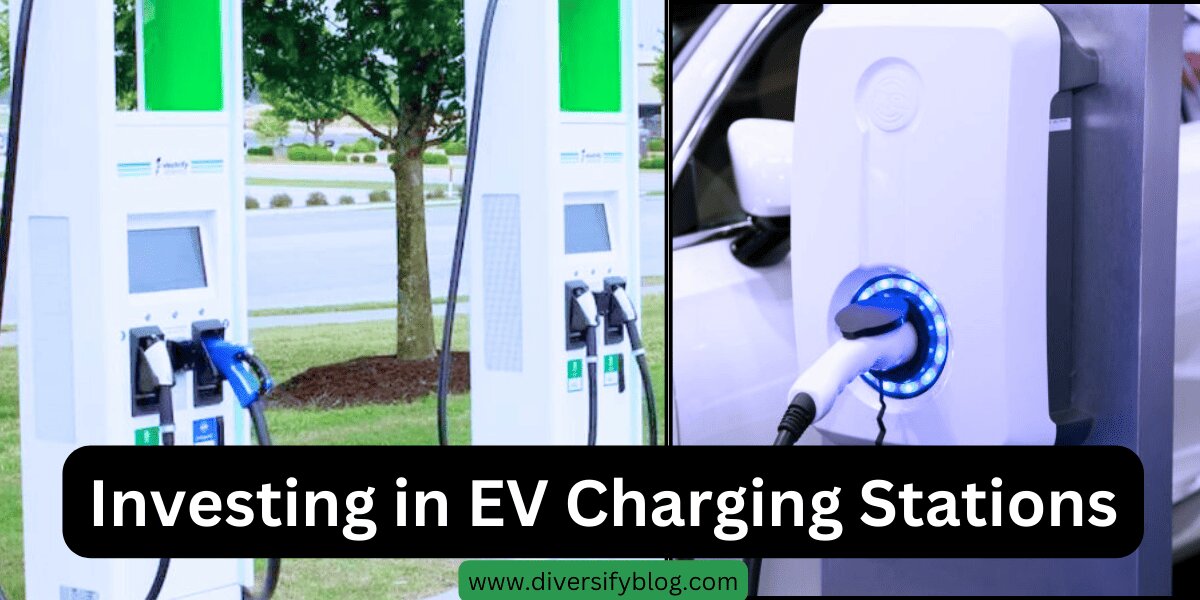Introduction:
Hey there, fellow Jeep enthusiasts! Are you tired of seeing that dreaded “Start/Stop Not Ready Battery Charging” message flashing on your dashboard? Don’t worry, you’re not alone. Many Jeep owners have faced similar electrical gremlins at one point or another. But fear not, because help is at hand! In this comprehensive guide, we’ll dive deep into ”How to Fix “Start/Stop Not Ready Battery Charging” Woes in Your Jeep’s electrical system and uncover practical solutions to get your ride back on the road in no time. From diagnosing common issues to adjusting your driving habits, we’ll leave no stone unturned in our quest to banish those pesky warning messages for good. So grab your toolkit and buckle up—let’s get started on the journey to a happier, healthier Jeep!
This intro incorporates your specified keyword, “How to Fix “Start/Stop Not Ready Battery Charging” Woes in Your Jeep, and sets the stage for the guide, letting readers know they’ll find practical solutions to resolve this specific issue with their Jeep’s electrical system.
Table of Contents
1. Understanding the Message:
Hey there, fellow Jeep enthusiasts! Today, we’re diving into one of those pesky little messages that can pop up on your dashboard: “Stop/Start Not Ready Battery Charging.” But don’t worry, I’ve got your back! Let’s break it down together.
So, picture this: you’re cruising along in your Jeep, enjoying the open road, when suddenly, this message flashes on your screen. What does it even mean, right?
Well, it’s your Jeep’s way of telling you, “Hey, I’m having a bit of trouble keeping the battery charged when the engine’s not running.” It’s like your car’s way of saying, “I need a little boost here!”
Now, why is this happening? Most of the time, it’s because of the battery. Yep, that little powerhouse under your hood might be feeling a bit under the weather. But don’t freak out just yet—it’s usually just a warning that your battery needs a bit of TLC.
You see, your Jeep’s got this cool system called the Energy Storage System (ESS). It’s like the battery’s superhero sidekick, storing up energy to power all the fancy electrical stuff in your car. But sometimes, it needs a bit of time to charge up properly.
So, when your battery levels start to dip too low, the Stop/Start system takes a little break to juice up. And that’s when you see that message pop up on your screen.
But hey, before you start stressing out, let’s make sure everything else is in tip-top shape, alright? Here’s what you can do:
Step 1: Check Battery Voltage and Charge Levels
Grab yourself a multimeter and check the voltage of your main and auxiliary batteries. They should be sitting pretty at around 12 volts or higher. If not, it might be time for a recharge or a replacement.
Step 2: Inspect Cables and Terminals
Take a peek under the hood and make sure those cables and terminals are looking clean and snug. Corrosion or damage could be slowing down the charge, so give them a good once-over.
Step 3: Test the Alternator
Fire up your engine and whip out that voltmeter. Your alternator should be pumping out around 13 to 14 volts of juice. If it’s not, it might need a little TLC of its own.
Step 4: Check for Parasitic Draws
Unplug any fancy gadgets or gizmos you’ve added to your Jeep and see if they’re sucking up more power than they should. Sometimes, those aftermarket goodies can cause a bit of trouble.
Step 5: Evaluate Your Driving Habits
Think about how often you’re hitting the road. If you’re only taking short trips or leaving your Jeep sitting idle for long stretches, it might not be getting the charge it needs. Consider taking it out for a spin more often or investing in a trickle charger to keep things humming along.
So there you have it, folks! By following these simple steps, you’ll be well on your way to banishing that “Stop/Start Not Ready Battery Charging” message for good. And if you’re still feeling stuck, don’t hesitate to reach out to a mechanic or dealership for a helping hand. We’re all in this Jeep journey together!
2. Common Causes of the Issue
Hey there, Jeep fam! Let’s get into the nitty-gritty of why your trusty ride might be flashing that “Stop/Start Not Ready Battery Charging” message. Don’t worry, we’ll unravel this mystery together!

Faulty Batteries:
Ah, the heart of the matter—the batteries. You know, those little powerhouses that keep everything running smoothly? Well, sometimes they decide to throw a tantrum. It could be your main battery or the auxiliary one causing trouble. These batteries typically last around 3 to 5 years, but tough conditions like extreme weather can speed up their retirement plans.
Misbehaving IBS Sensor:
Now, here’s where things get a bit technical. Ever heard of the Intelligent Battery Sensor (IBS)? It’s like the brain of your battery system, making sure everything’s hunky-dory. But sometimes, it gets a little confused and starts sending out the wrong signals. Cue the “Stop/Start Not Ready Battery Charging” message. A malfunctioning IBS sensor can throw a wrench in the works, even if your batteries are technically A-OK.
Corroded or Loose Cables:
Think of your battery cables as the lifelines of your electrical system. They deliver the juice from the battery to where it’s needed most. But if they’re corroded or loose, it’s like trying to sip a smoothie through a clogged straw—not fun. Corrosion caused by battery fumes is a common culprit here. So, roll up your sleeves and give those cables a good inspection.
Malfunctioning Alternator:
Ah, the unsung hero of the electrical system—the alternator. It works overtime to keep those batteries charged and ready for action. But like any hero, it’s not immune to wear and tear. Overheating, short circuits, or just plain old age can cause it to go on the fritz. And when that happens, you guessed it—the “Stop/Start Not Ready Battery Charging” message makes its grand entrance.
Problematic Battery or Alternator Terminals:
Those little metal bits where the cables connect to the batteries and alternator? Yeah, they’re pretty important too. But if they’re rusty or gunky, they can throw a wrench in the charging process. So, grab your trusty screwdriver and give ’em a good scrub.
Short Drives or Infrequent Use:
Here’s a curveball for you—your driving habits might be to blame. If you’re only taking short trips or leaving your Jeep sitting idle for long stretches, it’s like expecting a plant to thrive without water. Your batteries need regular exercise to stay in tip-top shape, so consider taking your Jeep out for a longer spin every now and then.
Impact of Harsh Weather:
Mother Nature can be a tough cookie, especially when it comes to your batteries. Freezing temperatures can slow down those chemical reactions inside the battery, making it harder to hold a charge. So, if you live in a chilly climate, be extra vigilant and give your batteries some TLC during the winter months.
3. Diagnosing the Problem:
Hey there, fellow Jeep adventurers! Now that we’ve uncovered some of the common culprits behind that pesky “Stop/Start Not Ready Battery Charging” message, it’s time to roll up our sleeves and get to the bottom of things. Let’s dive into the world of diagnostics and figure out what’s going on under the hood.

Step 1: Check Battery Voltage and Charge Levels:
Alright, first things first—let’s give those batteries a health check. Grab yourself a trusty multimeter and get ready to do some sleuthing. Measure the voltage of both the main and auxiliary batteries. They should be sitting pretty at around 12 volts or higher. If they’re looking a bit under the weather, it might be time for a recharge or a replacement. Don’t worry, we’ll get those batteries back in fighting shape in no time!
Step 2: Inspect Cables and Terminals:
Next up, let’s take a peek at those cables and terminals. They might not be the most glamorous parts of your Jeep, but they play a crucial role in keeping everything running smoothly. Check for any signs of corrosion, damage, or looseness. If you spot any troublemakers, it’s time to break out the cleaning supplies and give them a good scrub. We want those connections to be as snug as a bug in a rug!
Step 3: Test the Alternator
Ah, the trusty alternator—our hero in shining armor. Let’s fire up the engine and see if it’s pulling its weight. Whip out your voltmeter and measure the output voltage while the engine is running. It should be pumping out around 13 to 14 volts of juice. If it’s falling short, it might be time for a little TLC. We’ll make sure our hero is back in fighting shape in no time!
Step 4: Check for Parasitic Draws
Now, here’s where things get a bit tricky. We need to make sure there aren’t any sneaky gadgets or gizmos sucking up more power than they should. Disconnect any aftermarket accessories or modifications and see if that fixes the problem. If not, it’s time to break out the multimeter and do a little detective work. We’ll track down those power-hungry culprits and send them packing!
Step 5: Evaluate Your Driving Habits
Last but not least, let’s take a moment to reflect on our driving habits. Are we taking our Jeep out for regular spins, or is it spending most of its time gathering dust in the garage? If it’s the latter, it might be time to shake things up a bit. Your batteries need regular exercise to stay in tip-top shape, so let’s hit the road and give them the workout they deserve!
4. Checking the Alternator
Hey there, Jeep enthusiasts! Now that we’ve covered some of the basics, let’s shine a spotlight on the unsung hero of your electrical system—the alternator. It’s time to see if this trusty component is pulling its weight or if it needs a little TLC.
Step 1: Understanding the Alternator’s Role
First things first, let’s talk about what the alternator actually does. Think of it as your Jeep’s personal power generator. When the engine is running, the alternator kicks into action, converting mechanical energy into electrical energy to charge up your batteries and power all those fancy gadgets and gizmos in your ride.
Step 2: Testing the Output Voltage
Alright, let’s put this bad boy to the test. Fire up your engine and grab your voltmeter. We want to measure the output voltage of the alternator while the engine is running. It should be cranking out around 13 to 14 volts of pure power. If it’s falling short of that mark, it might be time to roll up our sleeves and get to work.
Step 3: Looking for Signs of Trouble
Now, let’s take a closer look at our alternator and see if there are any red flags waving in the breeze. Keep an eye out for signs of overheating, like strange smells or smoke. Short circuits can also cause damage to the alternator’s diodes, so we’ll want to check for any signs of burnt or melted components.
Step 4: Addressing Common Issues
If we suspect that our alternator is on the fritz, there are a few common issues we’ll want to investigate. Overheating, often caused by extended use in hot weather, can wreak havoc on our alternator’s delicate components. Short circuits, caused by damaged wiring or faulty connections, can also put a damper on our alternator’s performance.
Step 5: Seeking Professional Help
If we’ve done all we can and our alternator is still giving us trouble, it might be time to call in the big guns. A qualified mechanic or dealership can perform more advanced diagnostics and repairs to get our alternator back in fighting shape. Remember, there’s no shame in asking for help when we need it!
5. Investigating Battery or Alternator Terminals
Hey there, fellow Jeep enthusiasts! It’s time to shine a light on those often-overlooked heroes of the electrical system—the battery and alternator terminals. Let’s roll up our sleeves and see if these connections are causing any trouble.

Step 1: Understanding the Importance of Terminals
First things first, let’s talk about why these terminals are so darn important. They’re the bridge between your batteries and the rest of your electrical system, ensuring that power flows smoothly where it’s needed most. But if they’re rusty, corroded, or loose, it’s like trying to make a phone call with a bad connection—not fun at all!
Step 2: Checking for Corrosion or Damage
Now, let’s take a closer look at those terminals and see if they’re up to snuff. Corrosion caused by battery fumes or exposure to moisture can wreak havoc on these connections, so keep an eye out for any signs of rust or gunk buildup. If you spot any troublemakers, it’s time to break out the cleaning supplies and give them a good scrub.
Step 3: Ensuring a Secure Connection
Loose connections can also cause problems, so let’s make sure everything is nice and snug. Give each terminal a gentle wiggle to see if it’s firmly attached. If it feels loose or wobbly, it’s time to tighten things up. Grab your trusty wrench and give those connections a little extra love.
Step 4: Addressing Potential Issues
If we suspect that our terminals are causing trouble, there are a few common issues we’ll want to investigate. Rust or corrosion can impede the flow of voltage through the system, causing our batteries to struggle with charging. Loose connections can also lead to intermittent power issues, leaving us scratching our heads in frustration.
Step 5: Seeking Professional Assistance
If we’ve done all we can and our terminals are still giving us trouble, it might be time to call in the pros. A qualified mechanic or dealership can perform more advanced diagnostics and repairs to ensure that our connections are up to snuff. Remember, there’s no shame in asking for help when we need it!
6. Adjusting Your Driving Habits
Hey there, fellow Jeep adventurers! Now that we’ve covered some of the technical stuff, let’s talk about something a little more… personal—your driving habits. Believe it or not, the way you drive can have a big impact on your Jeep’s electrical system. Let’s dive in and see if there are any tweaks we can make to keep those batteries happy and healthy.
Step 1: Reflect on Your Driving Patterns
First things first, let’s take a moment to reflect on our driving habits. Are we taking our Jeep out for regular spins, or is it spending most of its time gathering dust in the garage? If it’s the latter, it might be time to shake things up a bit. Your batteries need regular exercise to stay in tip-top shape, so let’s hit the road and give them the workout they deserve!
Step 2: Incorporate Longer Drives
If you find yourself taking lots of short trips, it might be worth incorporating some longer drives into your routine. Aim for at least 30 minutes of highway driving every now and then to give those batteries a chance to recharge fully. Think of it as a little treat for your Jeep—it’ll thank you for it later!
Step 3: Consider Weather Conditions
Now, let’s talk about everyone’s favorite topic—weather. If you live in a particularly cold climate, your batteries might need a little extra TLC during the winter months. Freezing temperatures can slow down those chemical reactions inside the battery, making it harder to hold a charge. So, be sure to give your batteries some extra love when the mercury starts to drop.
7. Frequent Use of Your Jeep
Hey there, Jeep enthusiasts! Let’s talk about one of the simplest solutions to the “Stop/Start Not Ready Battery Charging” message—frequent use of your Jeep. Believe it or not, giving your ride some regular exercise can work wonders for your batteries. Let’s dive in and see how we can keep those batteries happy and healthy with a little bit of time on the road.
Step 1: Make It a Habit
First things first, let’s make it a habit to take our Jeep out for regular spins. Whether it’s a quick trip to the grocery store or a leisurely drive through the countryside, getting behind the wheel on a regular basis can help keep those batteries in tip-top shape. Plus, who doesn’t love a good excuse to go for a drive?
Step 2: Follow Manufacturer Recommendations
Next up, let’s take a peek at the owner’s manual and see what the folks at Jeep have to say. They’ll often provide recommendations for how often you should drive your Jeep to keep everything running smoothly. So, let’s dust off that manual and see what pearls of wisdom we can uncover.
Step 3: Use a Trickle Charger
If you find yourself leaving your Jeep parked for extended periods, it might be worth investing in a trickle charger. These handy little devices keep your batteries topped up and ready to go, even if your Jeep isn’t getting much action. Think of it as a little insurance policy for your electrical system.
Conclusion:
Congratulations, Jeep enthusiasts! You’ve made it to the end of our comprehensive guide on tackling the dreaded “Start/Stop Not Ready Battery Charging” issue in your beloved ride. We’ve covered a lot of ground, from diagnosing common problems to implementing practical solutions and adjusting your driving habits for optimal battery health. Armed with this knowledge, you’re well-equipped to take charge of your Jeep’s electrical system and bid farewell to those pesky warning messages once and for all. Remember, maintaining a healthy electrical system is key to enjoying smooth rides and worry-free adventures. So go ahead, hit the road with confidence, and let the thrill of Jeep ownership take you to new heights. Safe travels, and may your Jeep journeys be filled with endless excitement and unforgettable memories!
This conclusion wraps up the guide by congratulating the reader on reaching the end and summarizing the key points covered throughout. It also encourages them to apply the knowledge gained to maintain a healthy electrical system in their Jeep, ultimately leading to worry-free adventures on the road.
Frequently Aksed Questions:
Why does my car say start-stop not ready battery charging?
Your car may display this message if it’s unable to keep the battery charged when the engine is off or if the battery needs charging. Common reasons include issues with the battery or charging system.
Can stop-start batteries be recharged?
Yes, stop-start batteries can be recharged. When the engine is running, the alternator charges the battery. However, if the battery is not holding a charge effectively, it may need to be replaced.
How long does a stop-start battery take to charge?
The time it takes to charge a stop-start battery can vary depending on factors such as the battery’s condition, the charging system’s efficiency, and the driving conditions. Generally, driving for at least 30 minutes can help recharge the battery adequately.
Does low battery affect stop-start?
Yes, a low battery can affect the stop-start system. If the battery doesn’t have enough charge, the system may temporarily disable itself to allow the battery to recharge, leading to messages like “start-stop not ready battery charging.



















